XTM vs Smartling
Smarter than Smartling: AI-native localisation with XTM
XTM Cloud delivers faster, smarter localisation without vendor lock-in. Automate at scale, adapt to any workflow, and cut costs with built-in AI.

Book your personalised demo
Book your personalizsed demo
Why AI-driven teams choose XTM for intelligent localisation
Smartling's AI stops at basic machine translation optimisation. XTM delivers enterprise-grade artificial intelligence that transforms your entire localisation workflow. Think AI-powered quality controls that catch compliance risks before they happen, AI-driven quality scoring from multiple language models, and automated workflows that route content based on confidence levels.
When you need AI that actually makes your translations smarter, not just faster, XTM is the clear choice.
Here are three reasons why XTM's AI wins for localisation

Multi-LLM intelligence with quality scoring
XTM's SmartContext combines multiple large language models to deliver superior translation accuracy. Our Intelligent Score system evaluates every translation using confidence metrics that align with MQM standards. Smartling's Neural MT Auto-Select only optimizes machine translation without quality scoring or confidence thresholds.

AI-powered compliance and risk management
Language Guard acts as your AI compliance firewall, automatically detecting harmful content, brand violations, and regulatory risks before they reach your audience. Smartling offers no AI-powered risk detection or compliance screening capabilities.

Intelligent workflow automation
XTM's AI doesn't just translate - it orchestrates your entire workflow. High-confidence translations automatically bypass review stages, whilst complex content gets escalated for human oversight. Smartling lacks workflow AI or automated routing based on quality metrics.
What's the difference between XTM and Smartling's AI approach?
Both platforms use artificial intelligence, but their strategies couldn't be more different. Smartling applies AI mainly to optimize machine translation suggestions and provide preview tools for editors. It's AI as a utility - helpful but limited to specific tasks.
XTM embeds AI throughout the entire localisation lifecycle. From initial translation through quality assurance to final publication, AI makes intelligent decisions at every stage. Whilst Smartling uses AI to improve MT output, XTM uses AI to transform how translation workflows actually operate.
Here's how their AI capabilities compare
XTM vs Smartling - AI translation intelligence
Modern AI translation goes far beyond simple machine translation. The most advanced platforms use multiple language models, quality scoring, and intelligent routing to deliver translations that actually work in real business contexts. It's the difference between AI that translates words and AI that understands meaning.
How Smartling approaches AI translation
Smartling's Neural MT Auto-Select chooses between different machine translation engines based on language pairs and domain. Their AI Translate preview tool helps editors see potential translations, but the AI involvement stops there. No quality scoring, no confidence metrics, no intelligent routing based on translation complexity.
How XTM's AI actually thinks about translation
XTM's SmartContext technology combines multiple large language models to evaluate translation options simultaneously. Each segment gets scored by three different AI systems, creating confidence metrics that drive automated workflow decisions. This isn't just better machine translation - it's AI that understands context, brand voice, and content complexity.
The platform's AI learns from your specific terminology, brand guidelines, and quality preferences. Language Guard adds another layer of intelligence by screening translations for compliance issues, harmful content, and brand violations before they reach your audience.
XTM's key AI translation capabilities include:
- Multi-LLM translation evaluation and selection
- MQM-aligned quality scoring from three AI systems
- Brand voice and terminology AI training
- Contextual understanding across file formats
- Automated confidence-based workflow routing
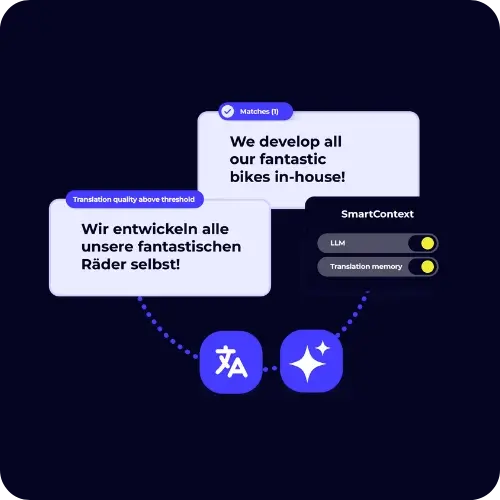
XTM vs Smartling - AI-powered quality assurance
Quality assurance determines whether your translated content actually works in real business contexts. Traditional QA relies on human reviewers catching every error. AI-powered QA systems catch issues automatically whilst routing content intelligently based on quality confidence.

How Smartling handles quality assurance
Smartling provides basic quality assurance tools without AI enhancement. Human reviewers use standard editing interfaces to check translations manually. No automated quality scoring, no AI-powered error detection, no intelligent routing based on translation confidence. Quality depends entirely on human oversight.
How XTM's AI transforms quality assurance
XTM's Intelligent Score system evaluates every translation using multiple AI models trained on quality metrics. The system automatically identifies potential issues, flags uncertain translations for human review, and routes high-confidence content directly to publication.
Language Guard adds proactive quality protection by screening content for compliance violations, harmful language, and brand inconsistencies. This AI-powered firewall prevents quality issues from reaching your audience whilst maintaining translation speed.
XTM's AI quality assurance features include:
- Automated quality scoring using MQM standards
- Multi-LLM confidence evaluation for every segment
- Proactive compliance and brand violation detection
- Intelligent routing based on quality confidence
- Continuous learning from quality feedback
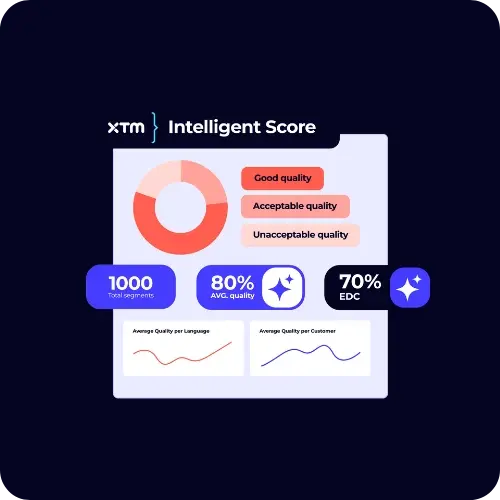
XTM vs Smartling - Intelligent workflow automation
Workflow automation determines how efficiently your translation projects move from creation to publication. Basic automation follows predefined rules. Intelligent automation makes decisions based on content analysis, quality confidence, and business context.
How Smartling automates workflows
Smartling provides standard workflow automation for moving content through translation stages. Projects follow predefined paths regardless of content complexity or translation confidence. No AI decision-making, no intelligent routing, no automated escalation based on quality metrics.

How XTM's AI orchestrates intelligent workflows
XTM's workflow AI analyzes each translation segment and makes routing decisions based on quality confidence, content complexity, and business requirements. High-confidence translations bypass unnecessary review stages, whilst complex content gets additional oversight automatically.
The system learns from your quality preferences and business processes to optimize routing decisions continuously. Project managers can set confidence thresholds that trigger different workflow paths, reducing manual oversight whilst maintaining quality standards.
XTM's intelligent workflow capabilities include:
- AI-driven task routing based on quality confidence
- Automated escalation for complex or uncertain content
- Intelligent bypass for high-confidence translations
- Continuous learning from workflow outcomes
- Custom confidence thresholds for different content types
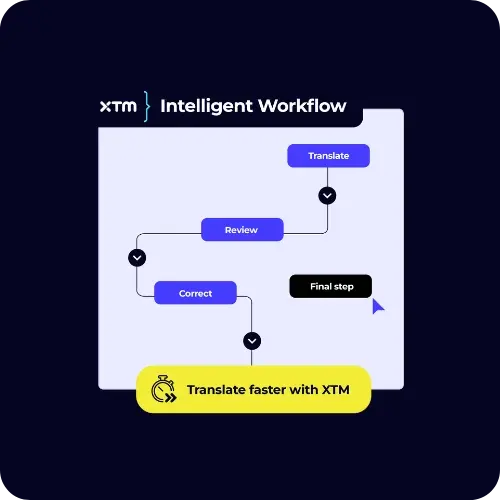
XTM vs Smartling - Enterprise AI governance
Enterprise AI governance ensures artificial intelligence systems operate within business compliance requirements whilst providing visibility into AI decision-making processes. Regulated industries need comprehensive AI oversight and audit capabilities.

How Smartling handles AI governance
Smartling provides basic AI usage without enterprise governance features. No visibility into AI decision-making processes, no audit trails for AI-generated content, no role-based AI access controls. Limited compliance features for organisations with strict AI governance requirements.
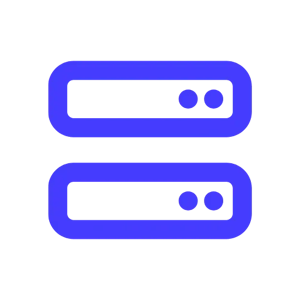
How XTM delivers comprehensive AI governance
XTM's enterprise AI governance provides complete visibility into AI usage across your localisation programme. Audit trails track every AI decision, quality scores, and workflow routing choice. Role-based access controls ensure appropriate AI usage whilst maintaining compliance with industry regulations.
The platform supports bring-your-own AI keys for organisations requiring data sovereignty over AI processing. Custom AI model training ensures brand voice consistency whilst maintaining compliance with internal AI usage policies.
XTM's enterprise AI governance features include:
- Complete AI decision audit trails and logging
- Role-based AI access controls and permissions
- Bring-your-own AI key support for data sovereignty
- Custom AI model training and brand voice consistency
- Compliance reporting for regulated industries
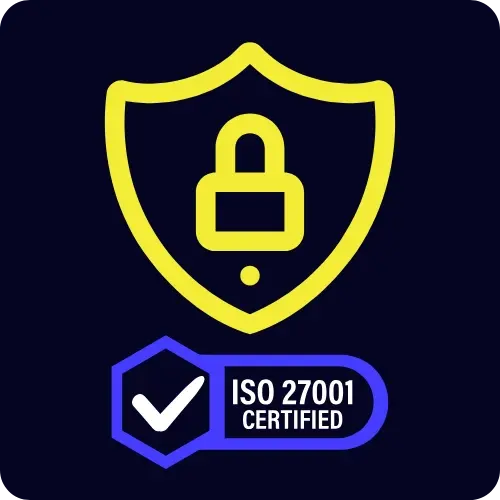
Try XTM, the intelligent alternative to Smartling's basic AI alternative
Transform your localization with AI that thinks. XTM delivers enterprise-grade intelligence for smarter, faster translations. From multi-LLM quality scoring to intelligent workflows, see why leading teams trust XTM for AI-powered localization.
Start your free trial or talk to our specialists to see how XTM can streamline your translation process — without compromising on quality or compliance.
Smartling FAQs
What is Smartling used for?
Smartling is a cloud-based translation management platform that helps businesses centralize and automate their localisation workflows. It enables teams to manage multilingual content, collaborate with translators, and streamline translation for websites, apps, and marketing materials.
Smartling is often used by companies looking to scale their translation efforts across digital channels. However, for enterprises that require more advanced AI functionality, granular workflow control, and integration flexibility, XTM provides a more powerful alternative. XTM supports multi-LLM translation, intelligent quality scoring, and compliance safeguards — features that go beyond Smartling’s core capabilities.
What is the difference between Smartling and LILT?
While both Smartling and LILT operate in the translation and localisation space, they cater to different use cases.
LILT is designed for speed and simplicity, using adaptive machine translation to assist human translators in real time. It’s ideal for fast-turnaround content and teams that prioritize productivity. Smartling, by comparison, focuses on managing structured localisation workflows with a more traditional translation memory and review process.
XTM offers a more comprehensive approach than both — combining the structured control of a TMS like Smartling with advanced AI features that continuously learn, score quality, and automate routing. For enterprises looking to scale intelligently and maintain brand consistency across regions, XTM offers the best of both worlds.
How is XTM different from Smartling when it comes to AI translation?
Smartling offers machine translation capabilities, but its approach is often tied to a single engine and focuses more on automation and integrations than on AI quality enhancement. XTM stands out by using multi-LLM intelligence — leveraging multiple large language models in parallel to compare outputs and select the best possible translation. Combined with Intelligent Score and contextual adaptation through SmartContext, XTM provides a smarter, more reliable AI translation system that improves over time.
Does Smartling offer the same level of workflow automation as XTM?
Smartling automates certain aspects of localisation, such as string detection and file handling, but its workflows still rely heavily on manual routing and fixed stages. XTM, in contrast, uses AI-driven workflow automation that adapts dynamically based on content quality and complexity. High-confidence AI translations can bypass human review, while lower-confidence segments are automatically escalated — helping teams localize faster without compromising on quality or control.
Which platform is better for enterprise localisation: Smartling or XTM?
Both platforms support enterprise needs, but XTM offers deeper flexibility, especially for global enterprises with complex content pipelines. XTM’s modular architecture, API-first design, and support for bring-your-own LLMs or MT engines make it highly customizable. Plus, features like Language Guard and AI key management give enterprises full control over compliance, security, and AI governance — capabilities not as deeply integrated in Smartling.
How do XTM and Smartling handle brand voice consistency across translations?
Smartling includes tools for translation memory and terminology management, which help maintain some brand consistency. XTM goes further with SmartContext, an AI system that understands context, tone, and brand-specific phrasing across all content types. By learning from your existing content and applying consistent voice and terminology, XTM helps enterprises achieve localisation that not only translates accurately — but also sounds like your brand in every language.

Switching has never been easier — and the ROI starts immediately
Join 1,000+ brands that made the move and never looked back.


